

AIR and I is a series of reports from artists who have participated in artist-in-residence programs in various regions. This report is from Tomoko Inagaki, who recently took part in the MAWA residence program in Winnipeg, Canada.
For approximately one month in July 2022, I joined the artist-in-residence program called Mentoring Artists for Women’s Art (MAWA) in Winnipeg, Canada. Interested in how the facility focuses on women’s art, I applied for the residence program and was accepted. Winnipeg is the capital of Manitoba, which is in the south-central region of Canada. Although my residence was initially scheduled for 2020, the pandemic meant it was pushed back to 2022. It was the first time I had been overseas for three years.
When I arrived at Winnipeg after my long flight, an ambassador from MAWA named Michelle Pichette was kind enough to pick me up. It was thanks to Michelle that my time at MAWA was such as success. MAWA ambassadors are volunteers who look after the facility’s artists. For an artist like me from overseas coming to a completely new country, Michelle was a friendly and dependable presence. Both Michelle and Winnipeg locals were incredibly kind. In fact, people from Manitoba are known to be among the friendliest in Canada.
The drive to MAWA was about 30 minutes from the airport. On the first floor was a gallery space and office, while the second floor was accommodation. The neighborhood itself didn’t appear particularly safe. Michelle even said that it’s best not to walk around outside when it gets dark. This was due to the large shelter for homeless people next door and the various types of people that would congregate. The outside of the building was a bit rough, too, and although I was a bit worried about my residence, it was a tidy, stylish flat with brick walls and a living environment that you wouldn’t be able to find in Japan.
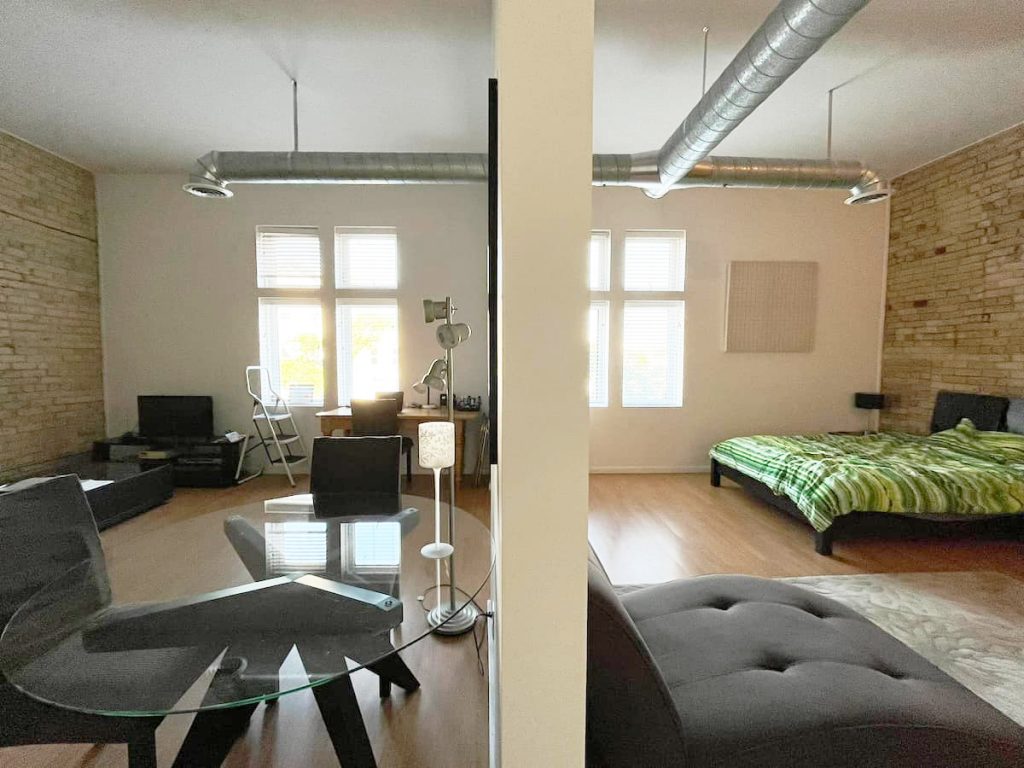
The inside of my flat
And so my life in residence began. I’ve experienced a few different artist-in-residence programs both in Japan and overseas, and there are various types. For MAWA, there is only one artist in residence, and the term is around one month. Although there was support from my ambassador Michelle, perhaps because it was the summer holiday, there wasn’t much support from staff at the facility itself. This meant, however, that there wasn’t much pressure on me to create, and I could go through the residence program in my own way. Right before I came to Canada I spent around a month as an artist in residence at a program in the Shirahama area of Wakayama. During my time there, I was expected to plan, create, and exhibit my work, and ultimately I completed two mid-size installations. As I did everything from scratch, there was no time to take a break. As such, the liberty with which I was able to take part in the MAWA residence program was perfect for me at the time.
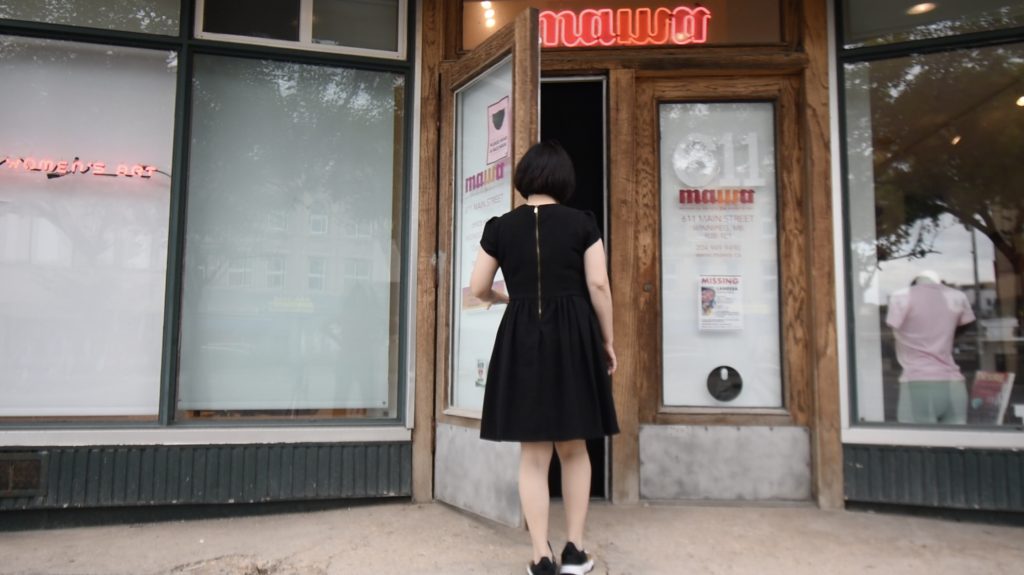
A photo from Project ‘Doors’
Before my residence at MAWA, I submitted a plan for the work I would create while there. One was to continue with the creation of video for Project ‘Doors’, an artwork I began in 2013. The second was to think about the next stage of a project I created called Partitions. In Japan, see-through partitions are still in place in stores and other places where people congregate. In Winnipeg, however, these partitions had been almost entirely removed several months prior. While wandering the streets, I thought about a concept akin to partitions that no longer existed. While I avoided an area nearby said to be home to a certain gang, I preferred the less popular areas. One of the most charming landscapes was an excessively large space with rows of seemingly deserted buildings. I used my camera to take photos of the cracked windows, broken doors, abandoned goods, and rotten items. In the less popular areas, I made sure not to stand out. In Winnipeg, where summer attire is typically a tank top and shorts, wearing the one-piece dress I brought over from Japan would have been like me emphasizing how I came from abroad. I wore three items of clothing that I bought for 15 dollars and felt like I had blended into the surroundings like a chameleon. While my concept nearly came to fruition during my residence, it didn’t end up as a finished piece. I’m still waiting for the ideas and experiences from Winnipeg to blossom.
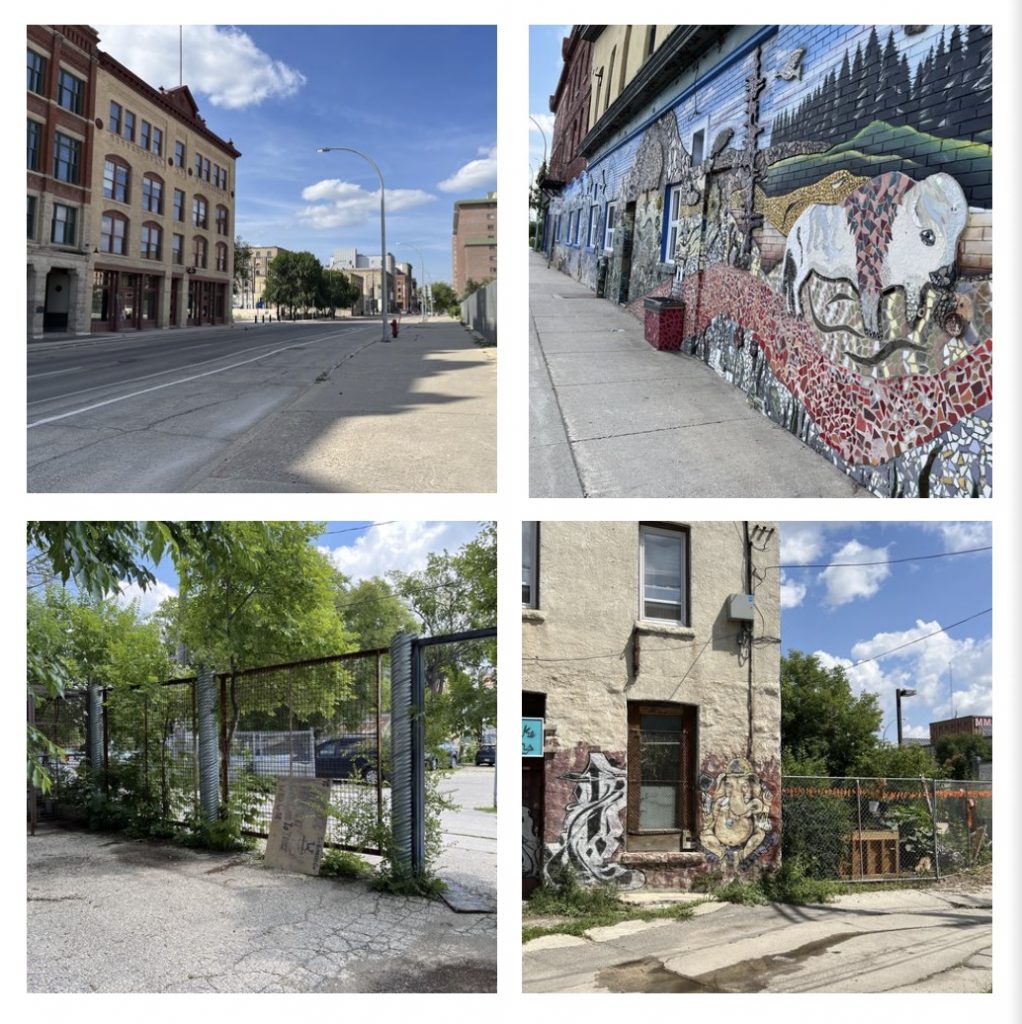
The streets of Winnipeg
At MAWA, in addition to my creative work, on the events side I also held a talk and exhibition. Even though it was during the summer holiday, many people came to listen to my talk. Most of the attendees were middle-aged women, and I was surprised to learn that most of them were artists. In Japan, it’s hard to imagine large groups of middle-aged female artists. There was a very warm atmosphere during the talk, and I could really feel the audience’s kindness and respect for their fellow artist. This feeling of acceptance filled me with happiness. In fact, it was such a wonderful, comfortable experience that it really made me wonder whether I could recreate this sort of atmosphere and platform in Japan.
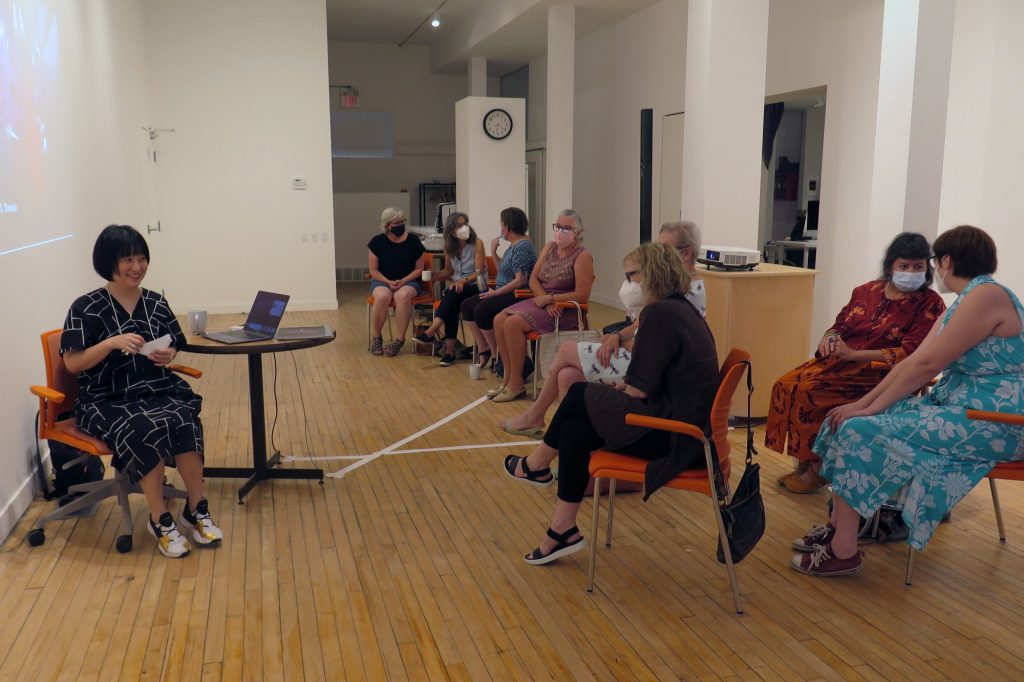
A scene from my talk
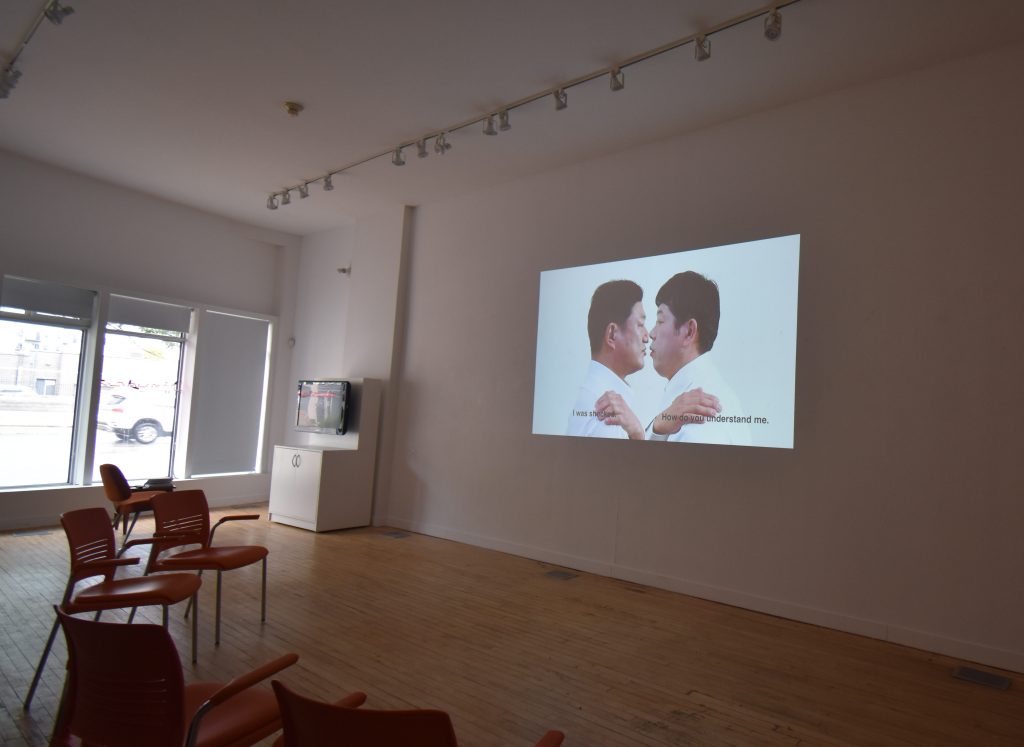
A scene from my solo exhibition Face
MAWA supports artists who identify as female. All the facility’s staff were women, and some were from a same-sex marriage. While of course MAWA hosts an artist-in-residence program, its main activities are mentorship programs. It turned out that some of those who attended my talk, as well as my ambassador Michelle, were graduates of this mentorship program. In the program, professional artists act as mentors to up-and-coming artists, who are the mentees. These mentors offer one-on-one advice from various angles regarding creation, conceptualization, and portfolio building. It is also an excellent system in terms of work, with the mentors being paid and the mentees paying. However, it is apparently possible for almost the entire program to be funded by grants. Canada has detailed processes and rules in place for fees around artistic activity, such as talks and exhibitions, and I got the impression that there was a very positive working environment for artists and art professionals.
Moreover, all the staff working at MAWA were artists themselves. Many artists in Winnipeg spend around three days working in an artist-run center, and the rest of their days creating in their studios. On top of female-focused art facilities such as MAWA, Winnipeg is also home to a range of other art centers covering various genres, be it disability art, street art, healing art, or handicrafts. All these facilities have been set up thanks to support at the national, provincial, and municipal level. When an artist’s activities are recognized, they can also receive government funding for their creation activities.

Dana Kletke, joint representative of MAWA
During my residence at MAWA, I became more interested in Winnipeg’s approach to art, as well as the systems in place at MAWA. When I asked Dana Kletke, joint representative of MAWA, what her aims for the facility were, she said that her wants to create a society in which artists can make a living off of art alone. This is unquestionably what artists across the world also want. As an artist from Japan where there are few opportunities to work as an artist, to me it seemed as though Winnipeg had already created an ideal framework for artists. For me, progressive systems that allow you to work at an art-related facility part time while continuing with your own artistic activity are ideal. I’m almost certain that the warm feelings I felt toward art at my talk are born from this well-built community.
A community where you can continue working as an artist is a healthy community. Moving forward, I hope that in Japan, too, I can encounter many middle-aged or even senior female artists. Moreover, a culture where you can continue being artistic easily is a thriving culture. And so, with thoughts on creating a platform where artists can feel the kind, protective nature of the audience, I finished my exhibition and returned to Japan.
Tomoko Inagaki
Born in 1975, Tomoko Inagaki resides in both Osaka and Hyogo. After graduating from the University of the Arts London, she returned to Japan to complete her master’s in arts and media at Osaka University. She has participated in artist-in-residence programs in Japan, Germany, France, the US, and more. Her art explores the boundaries between life and death, natural and artificial, and men and women. Her main medium is video installation, and much of her artwork incorporates performance elements. She has held solo exhibitions at CAS (Osaka, 2021), The Third Gallery Aya (Osaka, 2020), and FRISE (Hamburg, 2016), and has been involved in other exhibitions at the Kawakyu Museum (Wakayama, 2022), the Casablanca Biennale (2017), WROUGHT (Sheffield, 2016), the Kyoto City Museum of Art (2013), and more. Her next residence is scheduled for 2023 in New York.
2024.7.9Acasă la Hundorf Residency JournalArtist : Miyake Suzuko
2023.5.14AIR and I, 09 : Mentoring Artists for Women’s Art (MAWA) Residence Report